Category Archives: Visual Arts
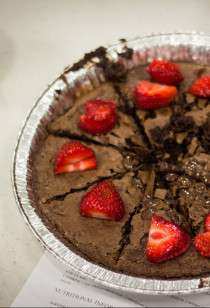
A BAKE OFF Brownies vs. Cookies © All Recipes Reserved
Which tastes better? Brownies or Cookies? To find out, they did a Bake Off. | Photography by Lyndon Davis

A BAKE OFF Brownies vs. Cookies © All Recipes Reserved
Which tastes better? Brownies or Cookies? To find out, they did a Bake Off. | Photography by Lyndon Davis

NUYORICAN FIND | Caught in the glories of race in Rodriguez Calero’s urban paintings
I was so fascinated by the man in Calero’s “Transcendent” that I kept circling back to it. Is it a black man? Oh, wait. The painter is a Nuyorican. What gives?

NUYORICAN FIND | Caught in the glories of race in Rodriguez Calero’s urban paintings
I was so fascinated by the man in Calero’s “Transcendent” that I kept circling back to it. Is it a black man? Oh, wait. The painter is a Nuyorican. What gives?

GUGGENHEIM MUSEUM | Cuban-American Conceptual artist delights with his curtain of golden beads
Felix Gonzalez-Torres’s “Untitled” Golden (1995) asks of gallery owners and curators to use these beads as room dividers through which any viewer must pass.

GUGGENHEIM MUSEUM | Cuban-American Conceptual artist delights with his curtain of golden beads
Felix Gonzalez-Torres’s “Untitled” Golden (1995) asks of gallery owners and curators to use these beads as room dividers through which any viewer must pass.
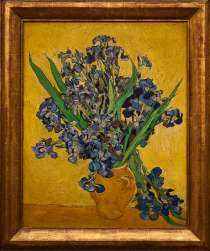
METROPOLITAN MUSEUM | Seen live in New York, Van Gogh’s two “Irises” will knock you out
It provides a singular opportunity to reconsider Van Gogh’s artistic aims and the impact of color fading on his intended results.

METROPOLITAN MUSEUM | Seen live in New York, Van Gogh’s two “Irises” will knock you out
It provides a singular opportunity to reconsider Van Gogh’s artistic aims and the impact of color fading on his intended results.

PERFORMANCE DESIGN? | A ghost train from Bulgaria, composed of sound and lights, speeds through Berlin’s city center
HR-Stamenov’s The Phenomenon of W24°58’59,43″ N42°07’55,29″ is very much a site-specific, media, sound and light installation. This time, he toys with the image of a ghost metro train which has traveled throughout Europe and suddenly appears in Berlin. It ignores physics, gaps between buildings, space and time.

PERFORMANCE DESIGN? | A ghost train from Bulgaria, composed of sound and lights, speeds through Berlin’s city center
HR-Stamenov’s The Phenomenon of W24°58’59,43″ N42°07’55,29″ is very much a site-specific, media, sound and light installation. This time, he toys with the image of a ghost metro train which has traveled throughout Europe and suddenly appears in Berlin. It ignores physics, gaps between buildings, space and time.

BUT IS IT PERFORMANCE DESIGN? | Tino Sehgal’s “This situation” dreamily implicates the art experience, and quite likely elite academia itself
“The situation” is purely experiential, engaging viewers immediately in real time and space to implore a questioning of the art experience, and experience itself. If “This situation” is not a work of performance design, I don’t know what is. It is not surprising to learn that Sehgal is a trained choreographer; he composes what is then physically interpreted by non-actors, actors and dancers, and in the case of “This Situation,” intellectuals.

BUT IS IT PERFORMANCE DESIGN? | Tino Sehgal’s “This situation” dreamily implicates the art experience, and quite likely elite academia itself
“The situation” is purely experiential, engaging viewers immediately in real time and space to implore a questioning of the art experience, and experience itself. If “This situation” is not a work of performance design, I don’t know what is. It is not surprising to learn that Sehgal is a trained choreographer; he composes what is then physically interpreted by non-actors, actors and dancers, and in the case of “This Situation,” intellectuals.
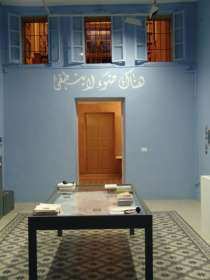
DEADLINES | Arab arts foundation seeks applications for $10,000 fellowships in Jordan
Darat al Funun is a home for the arts and artists from the Arab world. It organizes exhibitions, talks, film screenings and educational programs, hosts performances and concerts, offers artist residencies, and publishes books and catalogs. One to three fellowships are sought in Amman, Jordan.

DEADLINES | Arab arts foundation seeks applications for $10,000 fellowships in Jordan
Darat al Funun is a home for the arts and artists from the Arab world. It organizes exhibitions, talks, film screenings and educational programs, hosts performances and concerts, offers artist residencies, and publishes books and catalogs. One to three fellowships are sought in Amman, Jordan.
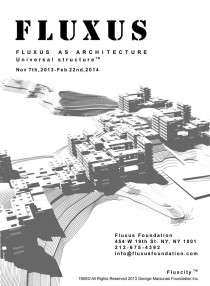
IN EXHIBITION | “Fluxus as architecture” argues for the structural coherence of George Maciunas’s universal language
It’s a prefab vision, but the exhibition seems to be arguing for a Fluxcity vision. that allows a single module to form into clusters, communities and hives. The concept leans on Maciunas’s prefab design for Fluxhouse, which was completed in 1965. An architect, George Maciunas, educated in architecture at Cooper Union and Carnegie Institute of Technology, held several prestigious professional positions in firms including Skidmore, Owing and Merrill, Olin Mathieson Chemical Corporation and Knoll Associates. For sure, Fluxcity is not a fancy idea.

IN EXHIBITION | “Fluxus as architecture” argues for the structural coherence of George Maciunas’s universal language
It’s a prefab vision, but the exhibition seems to be arguing for a Fluxcity vision. that allows a single module to form into clusters, communities and hives. The concept leans on Maciunas’s prefab design for Fluxhouse, which was completed in 1965. An architect, George Maciunas, educated in architecture at Cooper Union and Carnegie Institute of Technology, held several prestigious professional positions in firms including Skidmore, Owing and Merrill, Olin Mathieson Chemical Corporation and Knoll Associates. For sure, Fluxcity is not a fancy idea.
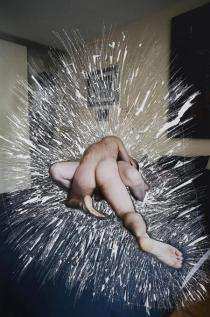
IN EXHIBITION | Photographic landscapes of sexual intimacy raise “Wonderlust’s” temperature
In “Wonderlust,” Canadian artist Sarah Anne Johnson’s work pushes the boundaries of photography by incorporating burning, scratching, gouging and glitter into her practice. These effects, she believes, “make visible the elation, beauty and self-consciousness of sex.” She photographed her subjects in their homes and then worked with the resulting prints in her studio

IN EXHIBITION | Photographic landscapes of sexual intimacy raise “Wonderlust’s” temperature
In “Wonderlust,” Canadian artist Sarah Anne Johnson’s work pushes the boundaries of photography by incorporating burning, scratching, gouging and glitter into her practice. These effects, she believes, “make visible the elation, beauty and self-consciousness of sex.” She photographed her subjects in their homes and then worked with the resulting prints in her studio

IN EXHIBITION | Philip Smith’s psychologically-charged canvases on view at New York’s Jason McCoy Gallery
Painter Philip Smith works the canvas like a physicist’s blackboard. Using found imagery, he can postulate new image formulations and equations. The paintings in this Philip Smith: Sign Language, on view at New York’s Jason McCoy Gallery starting November 17, are characterized by slightly visible erased imagery. The effect is akin to memory and ghost-like.

IN EXHIBITION | Philip Smith’s psychologically-charged canvases on view at New York’s Jason McCoy Gallery
Painter Philip Smith works the canvas like a physicist’s blackboard. Using found imagery, he can postulate new image formulations and equations. The paintings in this Philip Smith: Sign Language, on view at New York’s Jason McCoy Gallery starting November 17, are characterized by slightly visible erased imagery. The effect is akin to memory and ghost-like.
![Alfonso Ossorio (1916-1990)
Untitled [MR88], 1949
ink, wax, watercolor and gouache on paper
25 1/2 x 20 5/8 inches, signed and dated](../../../2013/10/ossorio_untitled_mr88_image_only0-w-210.jpg)
IN EXHIBITION | Last chance to see the secret history of postwar painter Alfonso Ossorio at Michael Rosenfeld Gallery
Alfonso Ossorio is a central figure of postwar American art, but he has been virtually absent from standard art history texts. Some people have claimed that Ossorio was just imitating Jackson Pollock. This exhibition shows that Ossorio had his own unique “wax-resist” painting technique that really no one else had used. He forged his own wild assemblages that he called “congregations.” It’s time to re-draft the history of postwar American art.
![Alfonso Ossorio (1916-1990)
Untitled [MR88], 1949
ink, wax, watercolor and gouache on paper
25 1/2 x 20 5/8 inches, signed and dated](../../../2013/10/ossorio_untitled_mr88_image_only0-w-210.jpg)
IN EXHIBITION | Last chance to see the secret history of postwar painter Alfonso Ossorio at Michael Rosenfeld Gallery
Alfonso Ossorio is a central figure of postwar American art, but he has been virtually absent from standard art history texts. Some people have claimed that Ossorio was just imitating Jackson Pollock. This exhibition shows that Ossorio had his own unique “wax-resist” painting technique that really no one else had used. He forged his own wild assemblages that he called “congregations.” It’s time to re-draft the history of postwar American art.

CONFERENCE ON BREAKING BOUNDARIES | Looking back at the early marriage of Theater, Architecture and the Visual Arts
This conference, “Ephemeral and Permanent,” focuses on the interrelations of the visual arts and the dramatic arts in Rome broadly between 1300 and 1700. In this context, scenography and pageantry apparatus were as much the domain of visual artists as painting, sculpture, and architecture.

CONFERENCE ON BREAKING BOUNDARIES | Looking back at the early marriage of Theater, Architecture and the Visual Arts
This conference, “Ephemeral and Permanent,” focuses on the interrelations of the visual arts and the dramatic arts in Rome broadly between 1300 and 1700. In this context, scenography and pageantry apparatus were as much the domain of visual artists as painting, sculpture, and architecture.
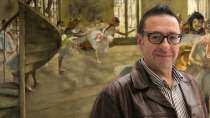
CRIT SNIT | Curators are the new enemy of the art world
The British art critic Waldemar Januszczak rails against curators in today’s Letters Page of the Guardian

CRIT SNIT | Curators are the new enemy of the art world
The British art critic Waldemar Januszczak rails against curators in today’s Letters Page of the Guardian
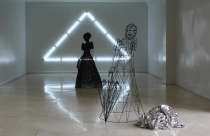
IN EXHIBITION | Tyler Rollins Fine Art hosts Philippine artist Patricia Perez Eustaquio
The works in The Future That Was exhibitions in New York and Manila are reflections upon the structures and ideas that produce, frame and promote art and design. Philippine artist Patricia Perez Eustaquio weaves an open-ended narrative that examines notions of innovation and novelty, timeliness and timelessness, particularly as they relate to the language of design and fashion. She is interested in how material, fabrication, and intention combine to form an object that then takes on a life of its own.

IN EXHIBITION | Tyler Rollins Fine Art hosts Philippine artist Patricia Perez Eustaquio
The works in The Future That Was exhibitions in New York and Manila are reflections upon the structures and ideas that produce, frame and promote art and design. Philippine artist Patricia Perez Eustaquio weaves an open-ended narrative that examines notions of innovation and novelty, timeliness and timelessness, particularly as they relate to the language of design and fashion. She is interested in how material, fabrication, and intention combine to form an object that then takes on a life of its own.




